Have you ever seen someone flick a tablecloth out from under plates that stay in place? The plates stay in place because of a concept called inertia.
A slightly easier way to demonstrate inertia is by dropping an Easter egg ( or other object ) into a container.
We usually do this science demonstration with an orange or lemon. This chocolate egg variation is just for fun.
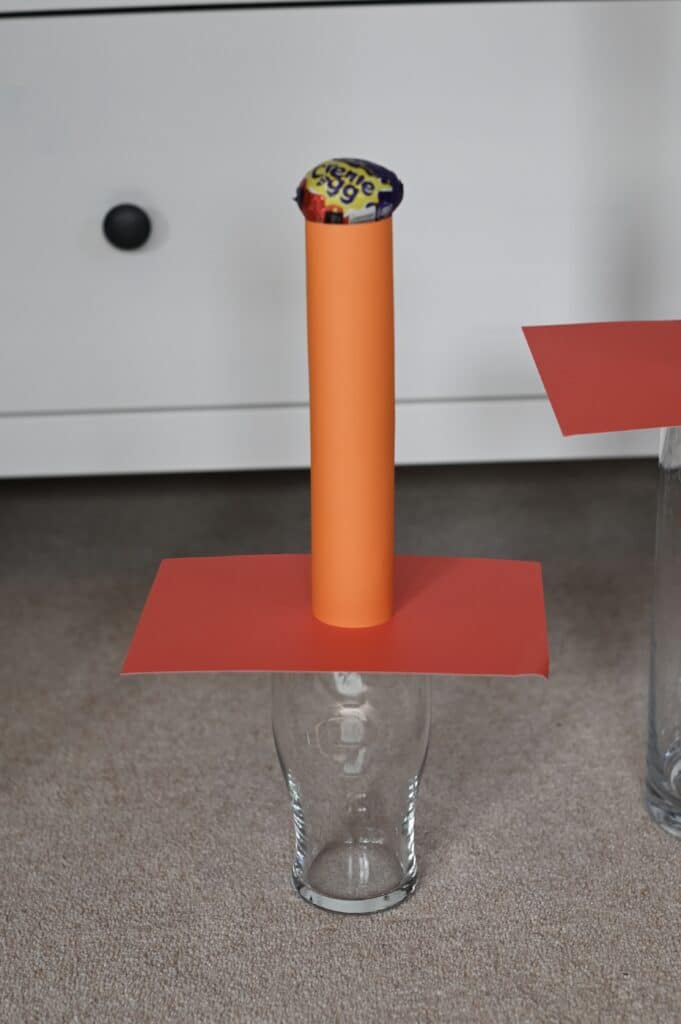
Easter Egg Inertia Challenge
You'll need
A piece of card ( cardstock )
Cardboard tube
Pint glass
Easter eggs
Instructions
Place the card on top of the glass and the cardboard tube on top of the card.
The cardboard tube should be in line with the centre of the glass.
Carefully place a chocolate egg on top of the tube.
Quickly pull the card back. The egg should drop into the glass.
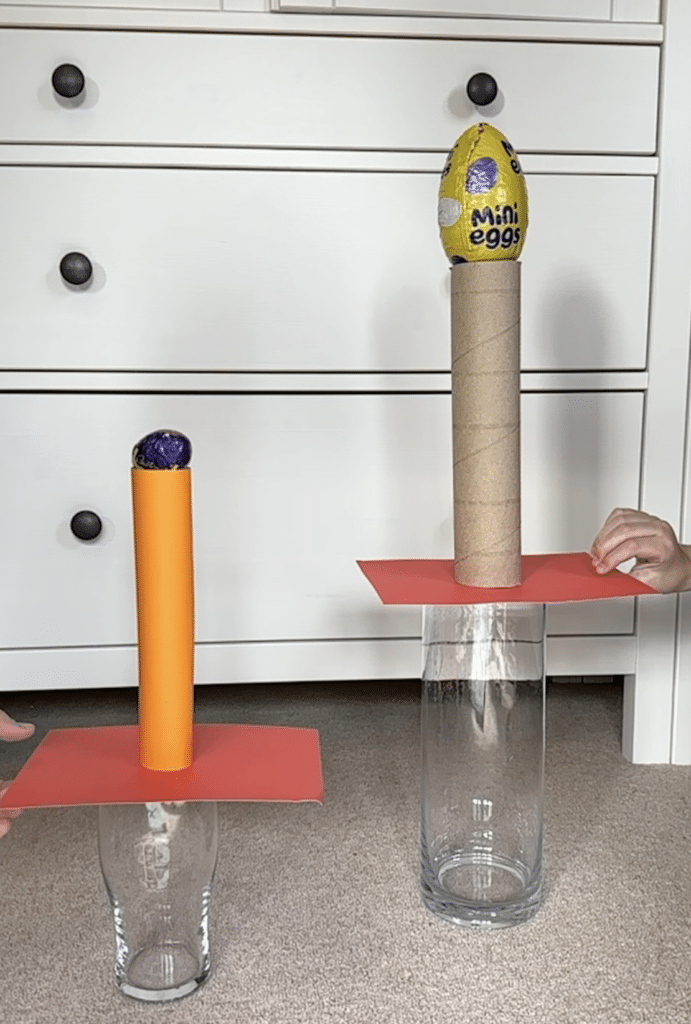
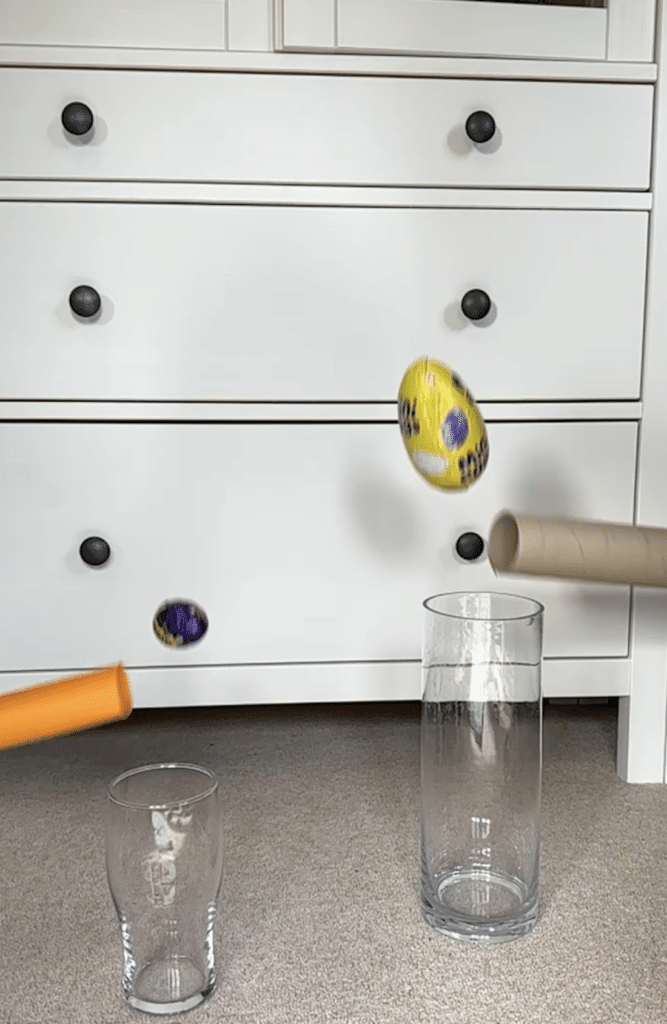
Why does this work?
The chocolate eggs are heavier than the cardboard tube, so they don't move as easily and fall straight down. This is called inertia. Inertia is how hard it is for a force to move an object. The column has low inertia, and the egg has high inertia.
There's no sideways force acting on the egg, so it falls straight down because of gravity.
Newton’s First Law states that an object remains at rest unless acted on by a force.
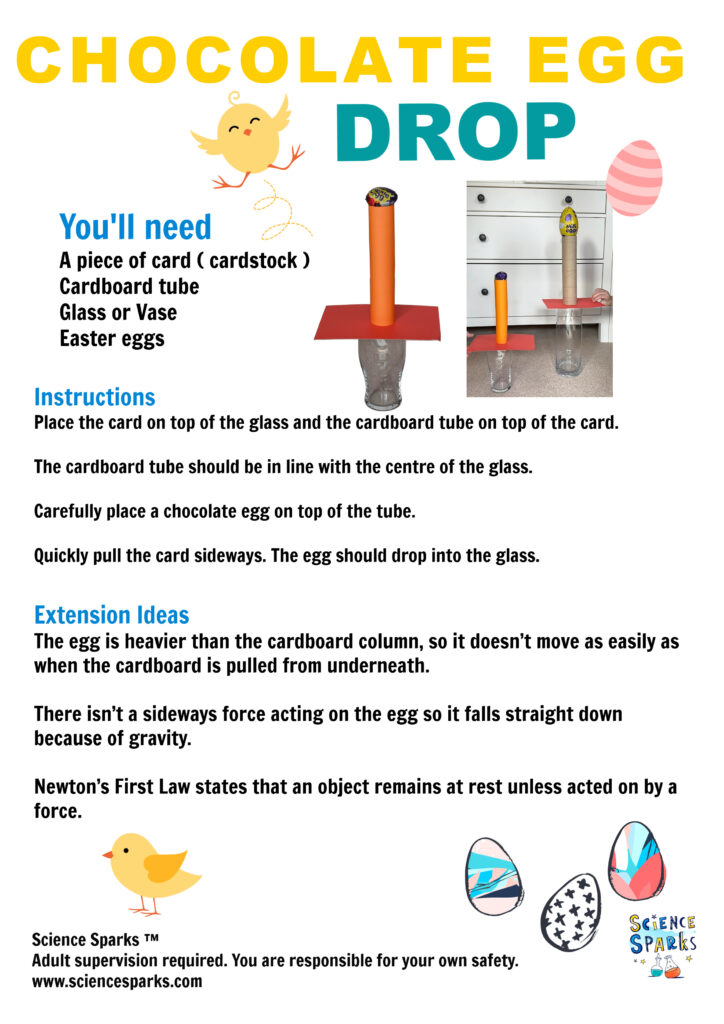
Extension Activities
Try one of my other awesome Easter STEM Challenges!
Learn more about Newton's Laws of Motion.
Try the same inertia activity with a lemon.
Science Concepts
Gravity
Laws of Motion
Inertia
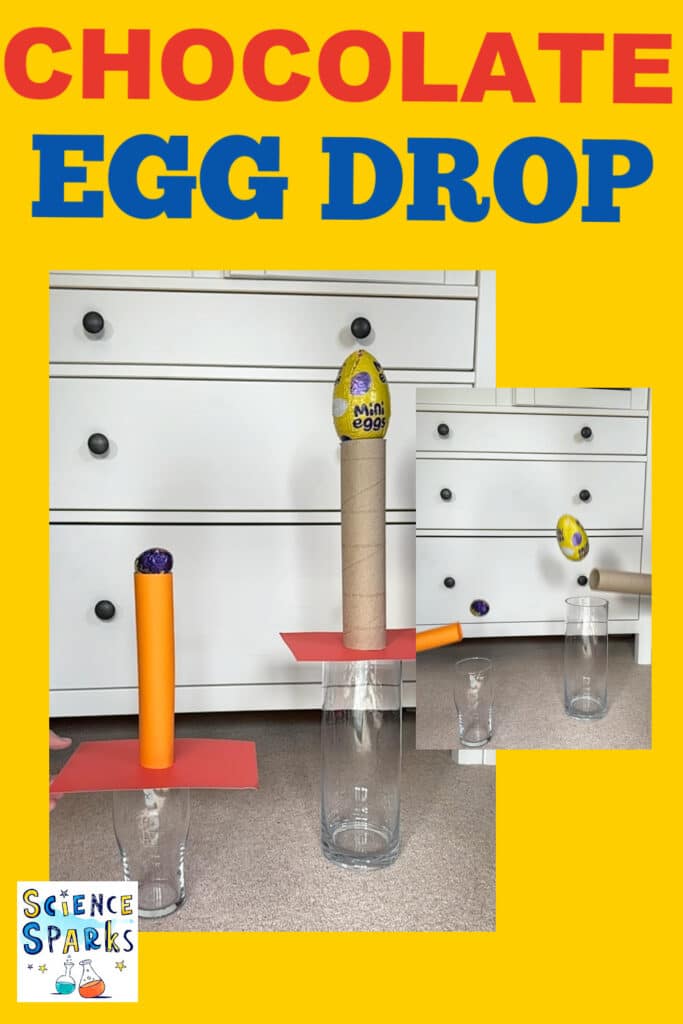
Last Updated on April 9, 2025 by Emma Vanstone
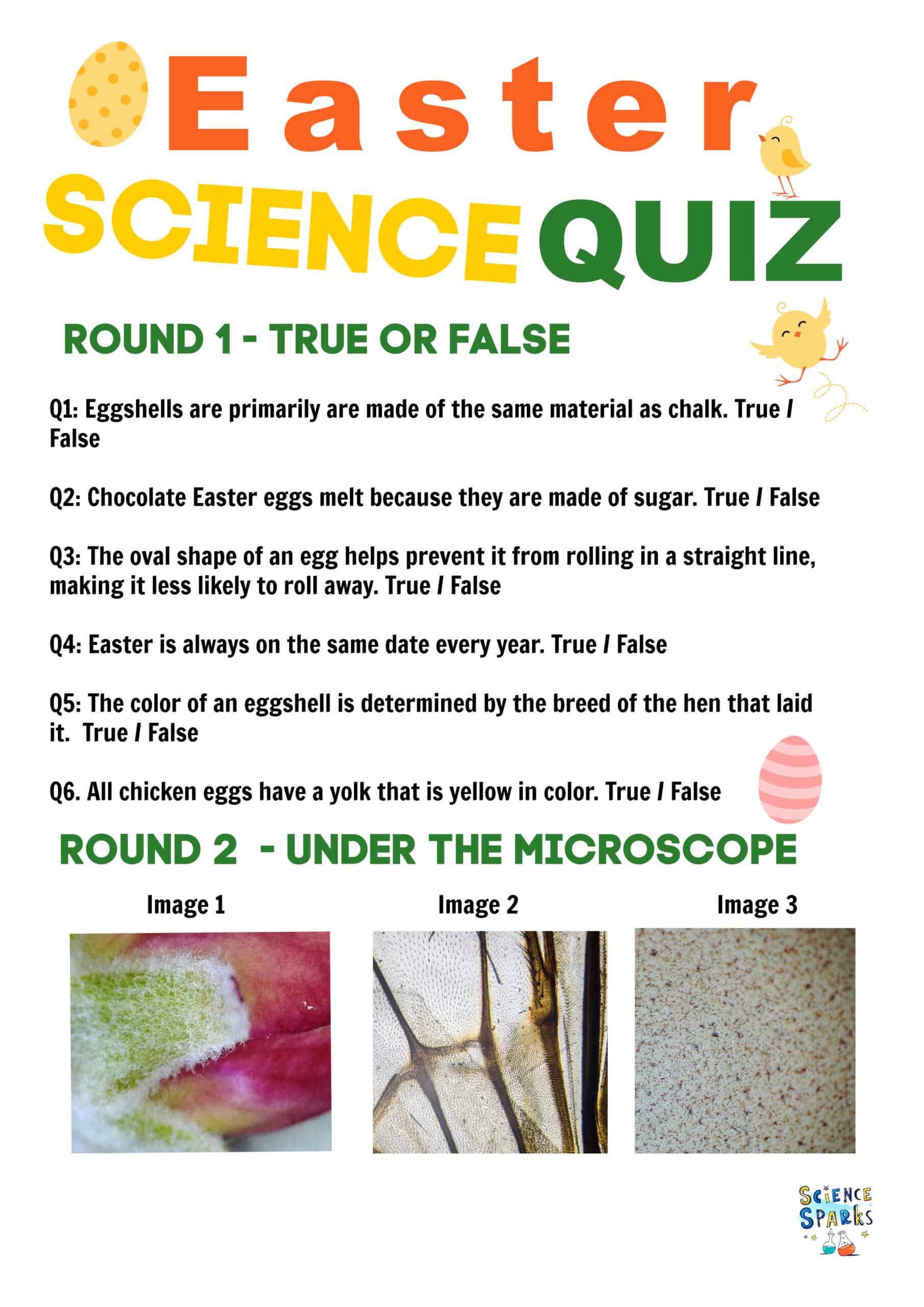
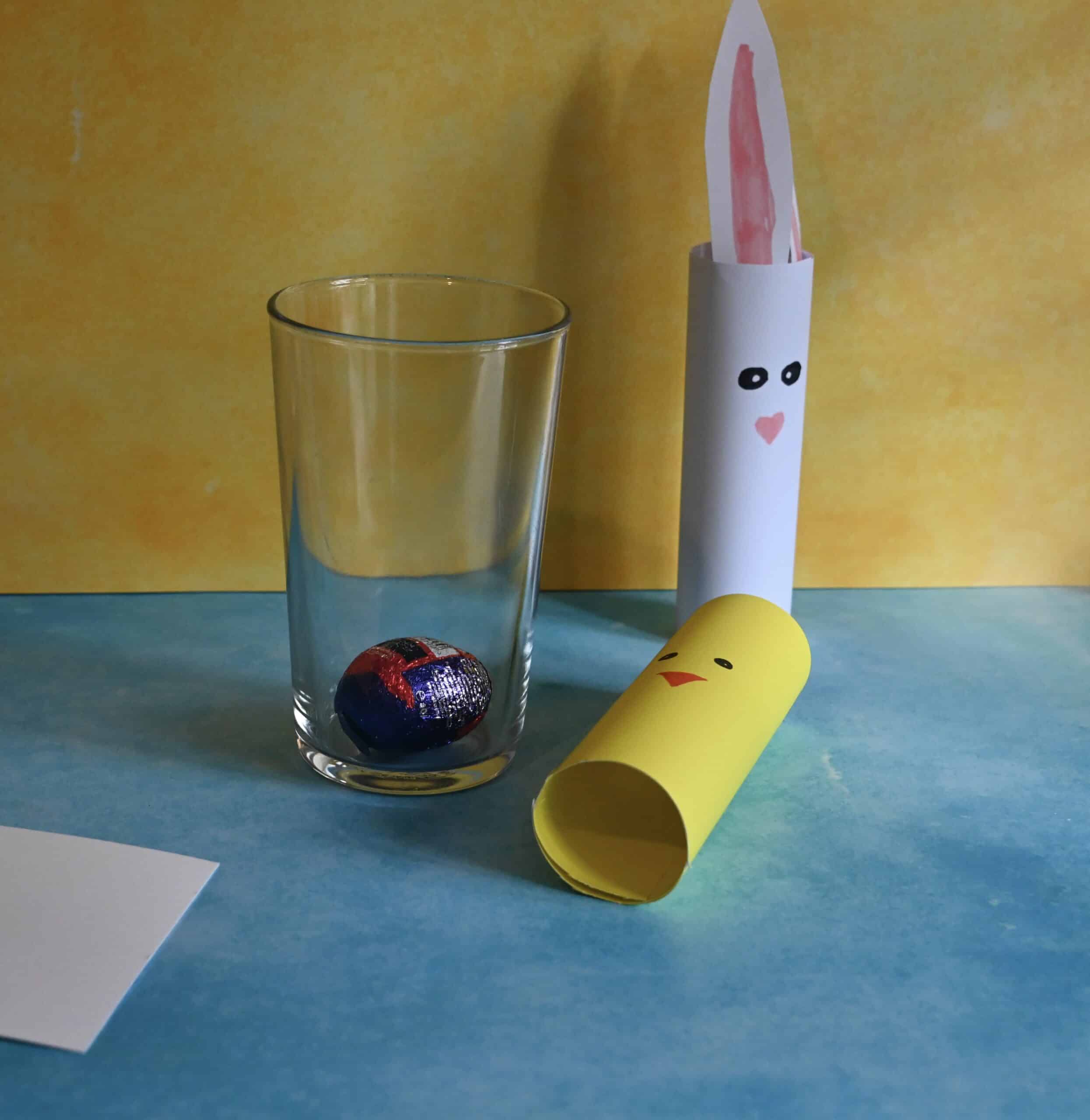
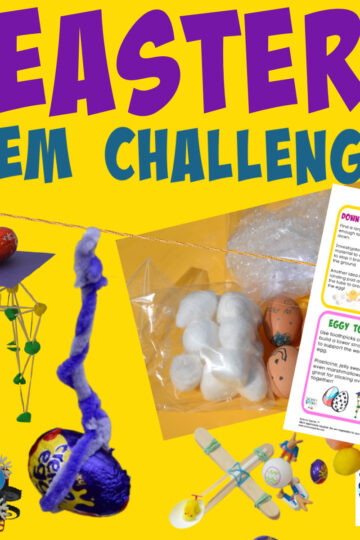
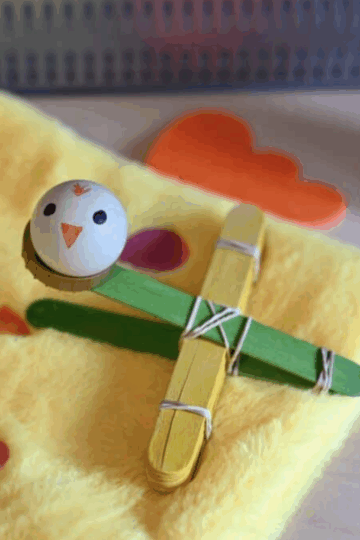
Leave a Reply